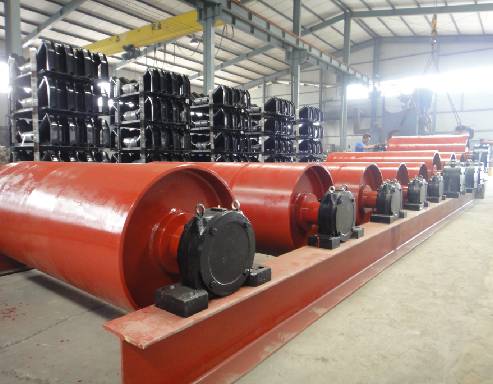 Afrikaans
Afrikaans  Albanian
Albanian  Amharic
Amharic  Arabic
Arabic  Armenian
Armenian  Azerbaijani
Azerbaijani  Basque
Basque  Belarusian
Belarusian  Bengali
Bengali  Bosnian
Bosnian  Bulgarian
Bulgarian  Catalan
Catalan  Cebuano
Cebuano  Corsican
Corsican  Croatian
Croatian  Czech
Czech  Danish
Danish  Dutch
Dutch  English
English  Esperanto
Esperanto  Estonian
Estonian  Finnish
Finnish  French
French  Frisian
Frisian  Galician
Galician  Georgian
Georgian  German
German  Greek
Greek  Gujarati
Gujarati  Haitian Creole
Haitian Creole  hausa
hausa  hawaiian
hawaiian  Hebrew
Hebrew  Hindi
Hindi  Miao
Miao  Hungarian
Hungarian  Icelandic
Icelandic  igbo
igbo  Indonesian
Indonesian  irish
irish  Italian
Italian  Japanese
Japanese  Javanese
Javanese  Kannada
Kannada  kazakh
kazakh  Khmer
Khmer  Rwandese
Rwandese  Korean
Korean  Kurdish
Kurdish  Kyrgyz
Kyrgyz  Lao
Lao  Latin
Latin  Latvian
Latvian  Lithuanian
Lithuanian  Luxembourgish
Luxembourgish  Macedonian
Macedonian  Malgashi
Malgashi  Malay
Malay  Malayalam
Malayalam  Maltese
Maltese  Maori
Maori  Marathi
Marathi  Mongolian
Mongolian  Myanmar
Myanmar  Nepali
Nepali  Norwegian
Norwegian  Norwegian
Norwegian  Occitan
Occitan  Pashto
Pashto  Persian
Persian  Polish
Polish  Portuguese
Portuguese  Punjabi
Punjabi  Romanian
Romanian  Russian
Russian  Samoan
Samoan  Scottish Gaelic
Scottish Gaelic  Serbian
Serbian  Sesotho
Sesotho  Shona
Shona  Sindhi
Sindhi  Sinhala
Sinhala  Slovak
Slovak  Slovenian
Slovenian  Somali
Somali  Spanish
Spanish  Sundanese
Sundanese  Swahili
Swahili  Swedish
Swedish  Tagalog
Tagalog  Tajik
Tajik  Tamil
Tamil  Tatar
Tatar  Telugu
Telugu  Thai
Thai  Turkish
Turkish  Turkmen
Turkmen  Ukrainian
Ukrainian  Urdu
Urdu  Uighur
Uighur  Uzbek
Uzbek  Vietnamese
Vietnamese  Welsh
Welsh  Bantu
Bantu  Yiddish
Yiddish  Yoruba
Yoruba  Zulu
Zulu drive pulley shaft
Understanding Drive Pulley Shafts Function, Design, and Applications
In the realm of mechanical engineering, the drive pulley shaft is an indispensable component harnessing the power of rotational motion. This shaft plays a crucial role in various applications, from industrial machinery to automotive systems, reflecting its importance in both design and functionality.
A drive pulley shaft is typically a long cylindrical component designed to transmit torque from a power source, such as an electric motor or an internal combustion engine, to a connected pulley. The pulley, which is mounted on the shaft, acts as a wheel with a groove that allows for the attachment of belts or ropes, facilitating the transfer of mechanical power. As the motor operates, it rotates the pulley shaft, which, in turn, makes the pulley spin, effectively driving whatever equipment or machinery requires power.
The design of a drive pulley shaft is critical for ensuring efficient power transmission while minimizing wear and tear
. Factors such as the material used, shaft diameter, and length must be carefully considered. Materials like carbon steel or alloy steel are commonly chosen for their high strength-to-weight ratio, durability, and ability to withstand bending forces. Effective design also includes surface treatments and finishing to prevent corrosion, which can compromise functionality over time.drive pulley shaft

In automotive applications, drive pulley shafts are commonly found in systems such as alternators, water pumps, and air conditioning units. The efficiency of these systems heavily relies on the performance of the drive pulley shaft. Proper alignment and balance are essential to prevent vibrations that can lead to premature wear or failure. Moreover, the integration of bearings at either end of the shaft allows for smooth rotation while minimizing friction, enhancing operational efficiency.
In industrial settings, drive pulley shafts are integral to conveyor systems, elevators, and various heavy machinery. They support large loads and are designed to withstand rigorous operating conditions, including high speeds and significant temperature variations. Manufacturers often conduct extensive testing to ensure that these shafts meet safety and performance standards, which is crucial for maintaining uninterrupted operations.
In conclusion, the drive pulley shaft is a fundamental element in many mechanical systems that requires thoughtful design and robust material selection. Its functionality hinges on effective torque transmission, durability, and resistance to wear. As industries continue to evolve, the innovation surrounding drive pulley shafts will likely advance, leading to enhanced performance and efficiency in various applications. Understanding this component's significance helps engineers and technicians appreciate the intricate balance between design and function in mechanical systems.
-
Revolutionizing Conveyor Systems with Spiral Return RollersNewsMay.27,2025
-
Reliable Conveyor Pulley UpgradesNewsMay.27,2025
-
Optimizing Conveyor Efficiency with Roll Table Convey RollersNewsMay.27,2025
-
Maximizing Conveyor Efficiency with Wing PulleysNewsMay.27,2025
-
Maximize Conveyor Efficiency with Impact BedsNewsMay.27,2025
-
Clean Belt SolutionsNewsMay.27,2025





























